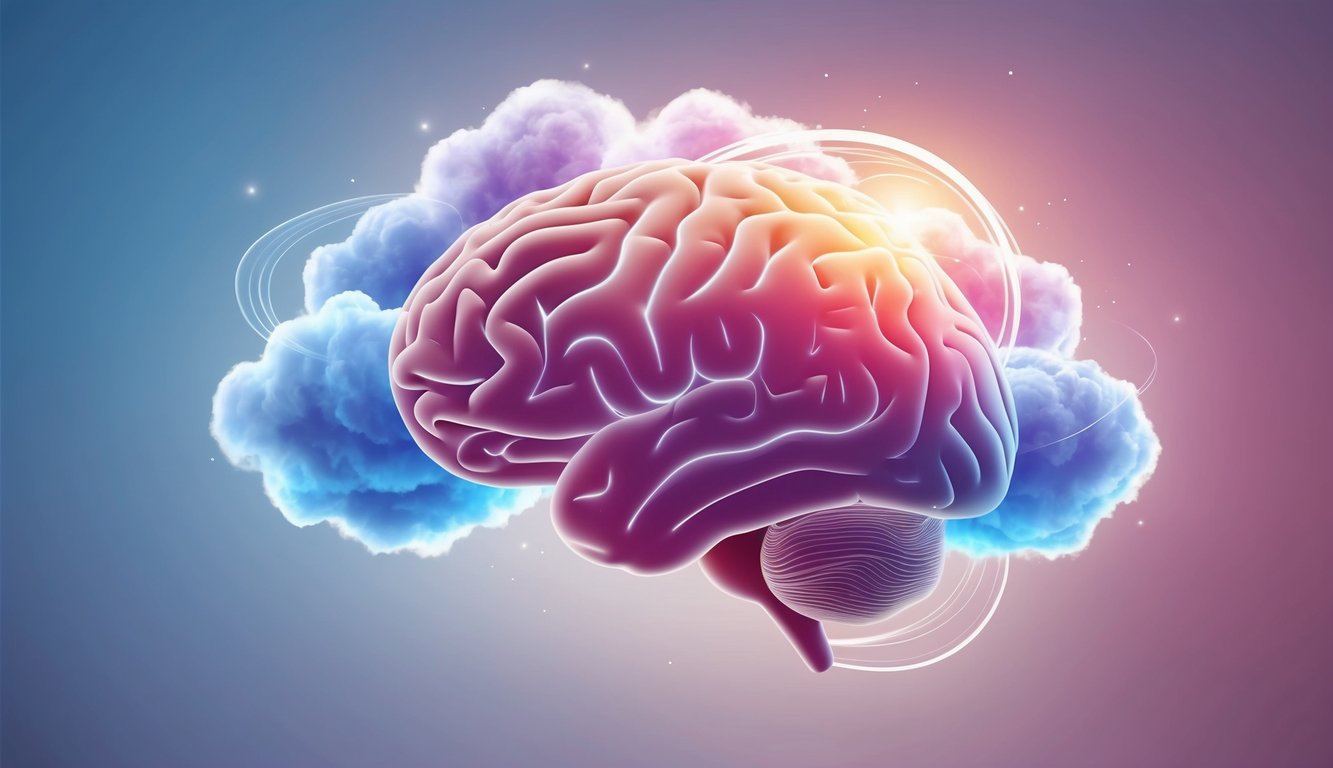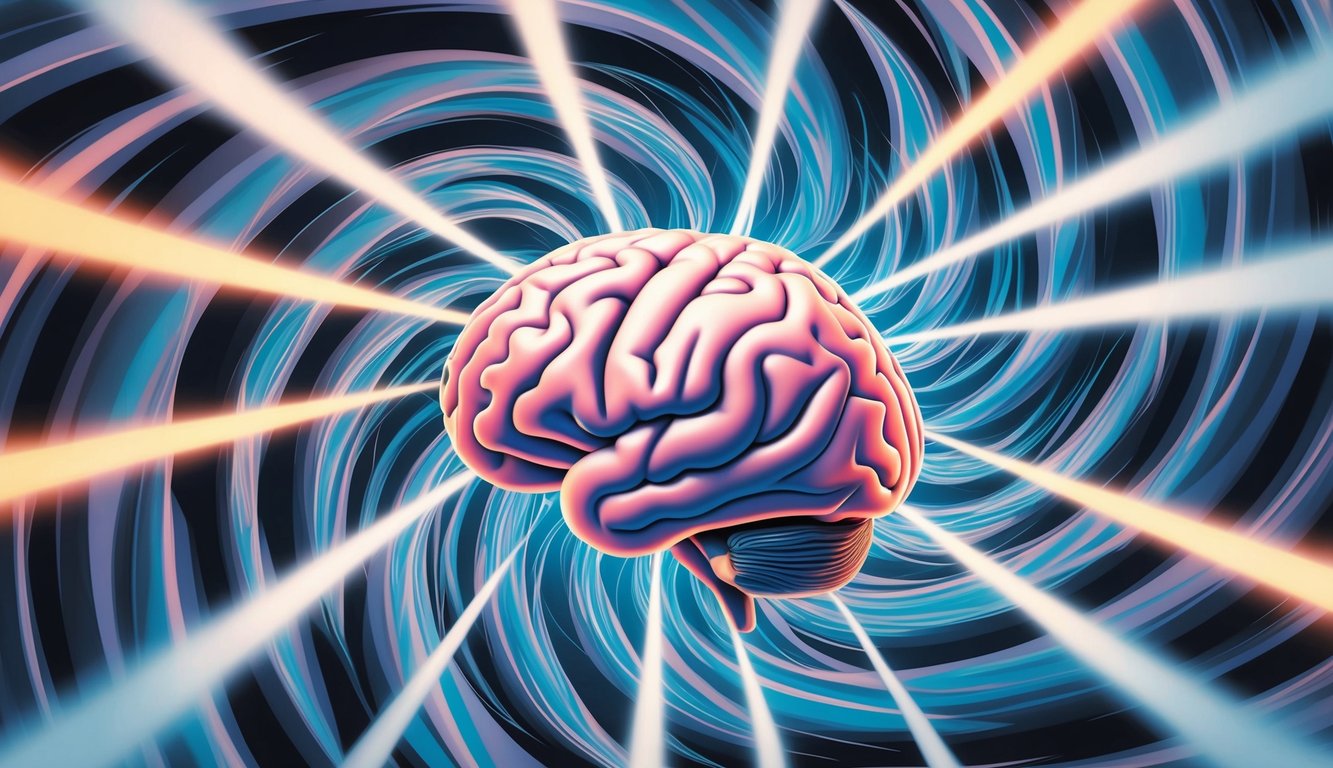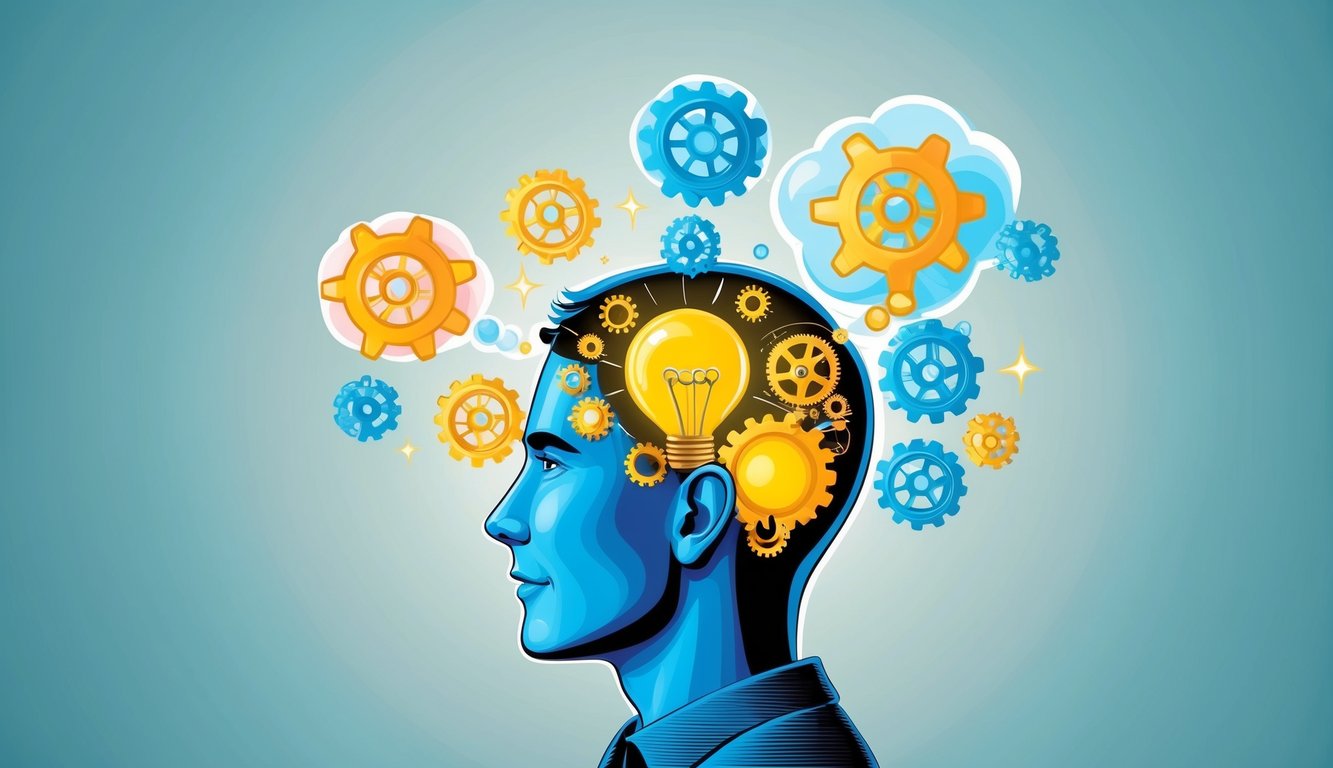Align Your Life with Your True North
The Power Quadrant System decodes your natural talents and pinpoints the career, timing and relationships that let you earn more, love deeper, and wake up eager for the day.
- Uncover your #1 high-income strength
- Draw in partners who raise your energy
- Work when your body’s clock is in “flow”
Dreams have long fascinated and puzzled humanity.
Every night, as you drift into slumber, your brain embarks on a remarkable journey. Your sleeping mind creates vivid worlds, intricate stories, and intense emotions, all while your body lies still.
During sleep, your brain cycles through different stages, each with its own unique patterns of activity.
Rapid Eye Movement (REM) sleep, in particular, is strongly associated with vivid dreaming. During this stage, your brain becomes highly active, almost as if you were awake.
Yet, your body remains paralyzed, preventing you from acting out your dreams.
The content of your dreams often reflects your waking life experiences, emotions, and concerns.
Your brain draws upon memories and knowledge to craft these nightly narratives.
Some researchers believe dreaming serves important functions, such as processing emotions, consolidating memories, and even problem-solving.
Key Takeaways
- Your brain remains active during sleep, creating vivid dream experiences
- Dreams often reflect your waking life and may serve important cognitive functions
- Understanding dreams can provide insights into your mind and emotional state
The Architecture of Sleep and Its Stages
Sleep follows a predictable pattern of stages throughout the night.
Your brain cycles through different states, each serving important functions for your body and mind.
Understanding REM and NREM Sleep
You experience two main types of sleep: rapid eye movement (REM) and non-rapid eye movement (NREM).
Decode Your Personal Success Blueprint
Power Quadrant System shows you the exact career, relationships, and daily rhythm that match your natural DNA—so you earn more, work happier, and connect deeper.
- Pinpoint your #1 money-making talent
- Erase conflict & attract ideal partners
- Multiply productivity with perfect timing
NREM sleep is further divided into three stages – N1, N2, and N3.
During NREM sleep, your brain waves slow down progressively:
- N1: Light sleep, easily awakened
- N2: Deeper sleep, body temperature drops
- N3: Deep, restorative sleep
REM sleep is when most vivid dreaming occurs. Your brain becomes highly active, similar to when you’re awake.
Your eyes move rapidly and your muscles are temporarily paralyzed.
Sleep States and Their Functions
Each sleep stage serves specific purposes for your health and well-being:
NREM Sleep:
- Helps restore physical energy
- Supports immune function
- Promotes tissue growth and repair
REM Sleep:
- Consolidates memories
- Processes emotions
- Enhances creativity and problem-solving
Your body cycles through these stages about 4-6 times per night.
A typical sleep cycle lasts around 90 minutes.
Tap Into Your Built-In Success GPS
The Power Quadrant System deciphers your genetic blueprint so you can lock onto the career, income and relationships that feel effortless—and wildly rewarding.
- Zero in on your natural high-earning genius
- Sync with partners who boost your vibe
- Wake up driven, finish days fulfilled
As the night progresses, REM periods tend to get longer while NREM stages shorten.
Polysomnography, a type of sleep study, can measure these stages precisely. It records your brain waves, eye movements, and muscle activity throughout the night.
Neuroscience Behind Dreaming
Dreams provide a fascinating window into brain function during sleep.
Your sleeping brain generates vivid experiences through complex neurological processes.
Brain Activity During Dreams
During dreams, your brain shows distinct patterns of activity.
REM sleep, when most vivid dreams occur, involves increased neuronal firing in certain regions.
Your visual cortex becomes highly active, explaining the rich imagery in dreams.
The limbic system, involved in emotions, also shows heightened activity.
Interestingly, your prefrontal cortex – responsible for logical thinking – is less active.
This may explain why dreams often feel illogical or bizarre to you.
The pontine tegmentum in your brainstem sends signals that paralyze your muscles, preventing you from acting out dreams.
EEG recordings reveal characteristic brain waves during dreaming.
Theta waves dominate, alongside bursts of higher frequency activity.
Neuroimaging and Dreaming
Modern neuroimaging techniques offer exciting insights into your dreaming brain. fMRI studies show increased activity in your visual areas, motor cortex, and emotional centers during REM sleep.
PET scans reveal heightened activation in your amygdala and hippocampus – structures linked to emotional processing and memory.
Your anterior cingulate cortex, involved in attention and decision-making, also shows increased activity.
Neuroimaging during lucid dreaming is particularly intriguing.
When you become aware you’re dreaming, your prefrontal cortex shows renewed activation.
This aligns with your restored ability to think logically within the dream.
Recent studies using AI to decode dream content from brain scans show promising results.
This technology may one day allow you to “see” your own dreams.
Memory and Dreaming
Your nightly dreams and memory processes are closely intertwined.
As you slumber, your brain engages in complex activities that shape both your dreams and memories.
Memory Consolidation in Sleep
During sleep, your brain works to strengthen and organize memories from the day.
This process, called memory consolidation, often influences your dream content.
You might notice fragments of recent experiences appearing in your dreams, mixed with older memories.
Your brain prioritizes important information during this time.
Emotional events tend to feature more prominently in dreams, as your mind processes and stores these impactful memories.
This is why you may dream about a stressful work meeting or an exciting conversation.
Dream recall can be tricky.
You quickly forget most dreams unless you write them down immediately upon waking.
This rapid memory loss is likely related to the unique brain state during dreaming.
The Role of the Hippocampus
Your hippocampus, a seahorse-shaped structure in your brain, plays a crucial role in both memory and dreaming.
It’s heavily involved in forming new memories and spatial navigation.
During sleep, the hippocampus replays daytime experiences, helping to transfer them to long-term storage.
Interestingly, your hippocampus becomes less active during REM sleep – when most vivid dreaming occurs.
This might explain why dreams often feel disjointed or surreal.
Without strong hippocampal input, your brain creates dream scenarios using looser associations between memories and emotions.
Research suggests that this process might help you integrate new information with existing knowledge, potentially enhancing learning and problem-solving skills.
The Role of Neurotransmitters in Dreaming
Neurotransmitters play a crucial part in shaping your dreams.
These chemical messengers in your brain fluctuate during sleep, altering your dream experiences.
Neurotransmitter Fluctuations and Their Effects
During REM sleep, when you’re most likely to have vivid dreams, levels of certain neurotransmitters change dramatically.
Norepinephrine and serotonin drop significantly.
This decrease may contribute to the bizarre and often illogical nature of your dreams.
Dopamine levels can increase during REM sleep.
This boost might explain why your dreams sometimes feel rewarding or pleasurable.
The balance of these chemicals affects your dream content and intensity.
For example, low serotonin may lead to more anxious or negative dreams.
Chemical Modulation of Dreaming
Your brain’s cholinergic system becomes more active during REM sleep.
This increased acetylcholine activity is thought to play a key role in generating dream imagery and narratives.
This heightened activity in the cholinergic system helps stimulate the visual and emotional centers of the brain, contributing to the vivid and often bizarre nature of dreams.
Researchers believe that REM sleep and dreaming are essential for emotional regulation and memory consolidation.
Disruptions to this process may impact cognitive function and emotional well-being.
Medications that alter neurotransmitter levels can impact your dreams.
Antidepressants that increase serotonin might reduce dream recall or intensity.
Conversely, drugs that boost dopamine can lead to more frequent and vivid dreams.
This effect highlights how closely your brain chemistry is tied to your dreaming experience.
Understanding these chemical influences gives you insight into why your dreams can vary so much from night to night.
Emotions and the Dreaming Brain
Dreams often involve intense emotions, reflecting the brain’s processing of feelings during sleep.
The neural mechanisms underlying emotional dreams involve several key brain regions working in concert.
Amygdala’s Involvement in Emotional Dreams
Your amygdala, a small almond-shaped structure deep in the brain, plays a crucial role in emotional dreams.
During REM sleep, when most vivid dreams occur, the amygdala becomes highly active.
This increased activity contributes to the emotional intensity you may experience in dreams.
The amygdala helps process fear, anxiety, and other strong emotions, which can explain why dreams often feel so emotionally charged.
Research has shown that damage to the amygdala can result in less emotionally vivid dreams, highlighting its importance in dream emotions.
Emotional Processing and Nightmares
Nightmares represent an extreme form of emotional processing during sleep.
These disturbing dreams often stem from unresolved anxieties or traumatic experiences.
Your brain may use nightmares as a way to work through difficult emotions in a safe, simulated environment.
This process can help you cope with and adapt to stressful situations in waking life.
For individuals with post-traumatic stress disorder (PTSD), nightmares can be particularly frequent and distressing.
These recurring dreams may reflect the brain’s attempts to process and integrate traumatic memories.
Role of Emotional Memory in Dreams
Your emotional memories significantly influence dream content.
The hippocampus, crucial for memory formation, interacts with the amygdala during sleep to incorporate emotional experiences into dreams.
Recent emotional events are more likely to appear in your dreams.
This phenomenon, known as the “day residue effect,” suggests that dreaming helps consolidate emotional memories.
Dreams may also serve to strengthen the connections between different emotional memories.
This process could contribute to emotional regulation and problem-solving in waking life.
Understanding Dream Content
Dream content provides fascinating insights into the human mind.
Researchers analyze dream reports and explore common themes to better comprehend these nightly mental adventures.
Analyzing Dream Reports
Dream reports are a crucial tool in dream research.
You can keep a dream journal to record your experiences upon waking.
This practice helps capture vivid details before they fade.
Researchers use these reports to study patterns and recurring elements in dreams.
Content analysis of dream reports reveals interesting trends.
Your dreams often reflect your daily experiences and concerns.
Common themes include falling, being chased, or showing up unprepared for an exam. Dreams about falling are among the most frequently reported and can be linked to feelings of insecurity or lack of control.
Researchers suggest that these dreams may stem from real-life stress or anxiety.
Understanding such patterns in dream content can provide insight into an individual’s emotions and psychological state.
Scientists also examine the emotional tone of dreams.
You might experience a range of feelings, from joy to fear, during your nocturnal journeys.
Themes and Symbolism in Dreams
Dreams frequently contain symbolic imagery.
You might see objects or scenarios that represent deeper meanings or emotions.
Sigmund Freud famously interpreted dreams as expressions of unconscious desires.
Modern dream research takes a more nuanced approach.
The threat simulation theory suggests that dreams help you practice dealing with dangers.
This could explain why chase or attack scenarios are so common in dreams.
Cultural influences also shape dream symbolism.
Your background and beliefs can affect how you interpret dream imagery.
Some symbols may have universal meanings, while others are more personal or culturally specific.
Dream themes often relate to your current life situations.
Consciousness and Lucid Dreaming
Lucid dreaming offers a unique window into the nature of consciousness during sleep.
This fascinating phenomenon allows you to become aware that you’re dreaming while still asleep, blurring the lines between waking and sleeping states.
Exploring Lucidity in Dreams
When you become lucid in a dream, you gain a level of conscious control typically reserved for waking life.
During these experiences, your brain activity resembles that of waking consciousness.
Studies show increased activity in areas associated with self-awareness and metacognition.
Lucid dreamers often report being able to influence dream content and make deliberate choices.
This ability provides researchers with opportunities to study consciousness in ways not possible during normal dreaming or waking states.
Frequent lucid dreamers tend to have increased functional connectivity in certain brain regions.
This suggests that lucid dreaming may be a trainable skill, potentially offering benefits for mental health and creativity.
The Phenomenology of Dreaming
The subjective experience of dreaming varies widely, from vivid storylines to fragmented imagery.
Your brain creates these experiences by integrating memories, emotions, and sensory information.
During REM sleep, when most vivid dreams occur, your brain exhibits patterns of activity similar to waking states.
However, key differences exist, such as reduced activity in logical reasoning areas.
Dreams often feel real while you’re in them, despite their sometimes bizarre nature.
This immersive quality stems from your brain’s ability to construct a convincing simulated reality from internal stimuli.
The transition from non-lucid to lucid dreaming involves a shift in your awareness.
You suddenly recognize the dream state, activating parts of your brain associated with self-reflection and metacognition.
Sleep Disorders and Disturbances
Sleep disorders can significantly impact your brain health and overall well-being.
They range from common issues like insomnia to more complex conditions that affect sleep quality and patterns.
The Impact of Sleep Deprivation
Lack of sleep can take a toll on your cognitive functions.
You might experience difficulty concentrating, memory problems, and mood changes.
Chronic sleep deprivation has been linked to an increased risk of developing mental health issues and neurodegenerative diseases.
Sleep research has shown that inadequate rest can impair your decision-making abilities and reaction times, making everyday tasks more challenging.
Your immune system may also weaken, leaving you more susceptible to illnesses.
Interestingly, sleep deprivation can sometimes lead to vivid dreams when you do manage to sleep, as your brain tries to compensate for lost REM sleep.
Treatment and Study of Sleep Disorders
Sleep medicine offers various approaches to tackle sleep disorders.
Your doctor might recommend cognitive behavioral therapy for insomnia or prescribe medications for conditions like narcolepsy or sleep apnea.
Sleep studies, conducted in specialized labs, help diagnose disorders by monitoring your brain waves, breathing patterns, and body movements during sleep.
These studies provide valuable insights into your sleep architecture and any abnormalities.
For some disorders, like REM sleep behavior disorder, treatment aims to ensure your safety during sleep and address underlying neurological issues.
Lifestyle changes, such as maintaining a consistent sleep schedule and creating a relaxing bedtime routine, often form part of the treatment plan.
The Cognitive Neuroscience of Dreaming
The cognitive neuroscience of dreaming explores how your brain generates and processes dream experiences.
This field examines the neural mechanisms underlying dream cognition and the methodologies used to study dreams scientifically.
Investigating the Cognitive Aspects
Your dreaming brain exhibits fascinating cognitive abilities.
During REM sleep, your prefrontal cortex – responsible for logic and self-awareness – becomes less active.
This may explain the often illogical nature of dreams.
Despite this, you can still engage in complex cognitive processes while dreaming.
You may solve problems, experience emotions, and even gain lucid awareness that you’re dreaming.
Studies show that your brain’s default mode network remains active during dreams.
This network is linked to self-reflection and mental imagery.
Dream content often reflects your waking concerns and memories.
This suggests your dreaming mind can access and manipulate stored information.
Methodological Approaches to Dream Studies
Studying dreams presents unique challenges, but researchers have developed clever techniques to peek into your sleeping mind.
Sleep labs use polysomnography to record your brain activity, eye movements, and muscle tone during different sleep stages.
This helps identify when you’re likely dreaming.
To capture dream content, you might be awakened and asked to report your dream experiences.
Some studies use diary methods, where you record dreams upon waking at home.
Lucid dreaming offers a novel approach.
In these dreams, you become aware you’re dreaming and can sometimes control the dream content.
This allows for real-time communication between the dreaming person and researchers.
Brain imaging techniques like fMRI have revealed which areas of your brain activate during dreaming.
These studies provide insights into the neural basis of dream experiences.
Dreaming for Problem-Solving and Creativity
Dreams can be a powerful tool for unlocking creativity and solving complex problems.
Your sleeping brain processes information differently, often leading to novel insights and solutions.
Dreams as a Cognitive Playground
When you dream, your mind is free from the constraints of waking logic.
This allows for unique connections and ideas to form.
Your brain combines memories, emotions, and knowledge in unexpected ways.
During REM sleep, key emotional and memory structures in your brain reactivate.
This process helps you reexamine issues from new angles.
Dreams have inspired countless works of art, music, and even scientific breakthroughs.
Many famous creators credit their dreams for sparking innovative ideas.
Try keeping a dream journal to capture these nocturnal insights.
You might be surprised by the creative solutions your dreaming mind generates.
Analyzing Dreams for Insight and Solutions
Paying attention to your dreams can provide valuable clues for problem-solving.
Your subconscious often works through challenges while you sleep.
Look for recurring themes or symbols in your dreams.
These may point to underlying concerns or potential solutions you haven’t considered.
Consider discussing vivid or puzzling dreams with a therapist.
They can help you unpack the meaning and apply insights to your waking life.
Don’t dismiss bizarre dream scenarios.
The strange logic of dreams can lead to breakthrough ideas when applied to real-world problems.
Practice lucid dreaming techniques to actively engage with your dreamscape.
This can enhance your ability to find creative solutions while asleep.
Frequently Asked Questions
Dreams fascinate us with their mysterious nature and potential insights into our minds.
You may wonder about the brain’s role in dreaming and how these nightly adventures impact your well-being.
What part of the brain is active during dreams and nightmares?
The prefrontal cortex shows increased activity during lucid dreaming, suggesting some waking-like executive functions activate within dreams.
Other key areas involved include the amygdala for processing emotions and the hippocampus for memory consolidation.
Your brain stem also plays a crucial role in dream generation and REM sleep regulation.
How does dreaming influence our psychological well-being?
Dreams can help you process emotions and experiences from your waking life.
They may provide a safe space to work through anxieties or fears.
Recurring nightmares could indicate unresolved stress or trauma.
Addressing these issues while awake may improve your sleep quality and overall mental health.
Can our brains create entirely new locations when we dream?
Your brain can combine memories and imagination to create novel dream settings.
While elements may be familiar, the overall landscape can be entirely unique.
This creative process demonstrates your mind’s remarkable ability to construct complex scenarios from various mental building blocks.
Why do humans experience dreams?
Dreams likely serve multiple purposes.
They may help consolidate memories, process emotions, and prepare you for future challenges.
Some researchers propose dreams act as a virtual reality simulator, allowing you to practice responses to potential threats or social situations.
What functions do dreams serve for our cognitive processes?
Dreams can enhance problem-solving skills by allowing your mind to explore unconventional solutions.
They may also play a role in creativity and inspiration.
Memory consolidation during sleep helps transfer information from short-term to long-term storage, potentially improving your learning and recall abilities.
How does the brain state differ when we are dreaming compared to being awake?
During REM sleep, when most vivid dreams occur, your brain shows patterns of activity similar to wakefulness.
However, certain areas like the prefrontal cortex are less active.
Your body experiences temporary paralysis to prevent acting out dreams.
This state allows your mind to explore imaginative scenarios while keeping you safely in bed.










